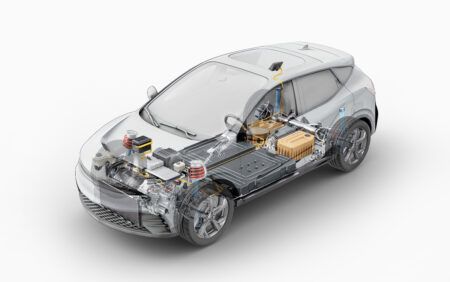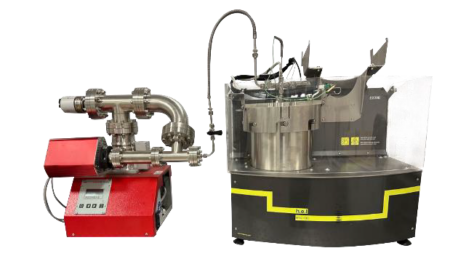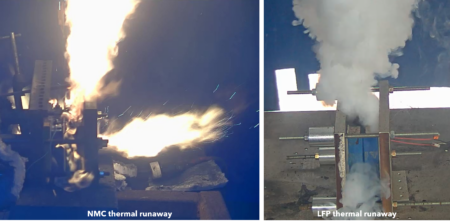Electric vehicles (EVs), once a rarity on the road, are now becoming a fixture for many drivers. Sales of passenger EVs soared by about 25% in the first quarter of 2024 compared to the same period in 2023, indicating a significant shift towards widespread adoption. While the passenger EV market charges ahead, the medium- and heavy-duty (MHD) vehicle segment continues to lag in electrification.
MHD vehicles, ranging from Class 4 to Class 8, include everything from box trucks to school buses to refuse trucks. To date, they have been slower to electrify, primarily due to their heavier workloads and demanding duty cycles. MHD vehicle’s range, battery capacity, maintenance, and charging dynamics differ significantly from those of conventional passenger EVs, requiring particular attention to the temperature ranges for lithium-ion battery packs and power electronics during operation and charging. As such, these vehicles demand tailored thermal management systems and operating procedures.
Fortunately, decades of vehicular thermal management innovation have culminated in cutting-edge solutions that effectively regulate EV component temperatures. These advancements enable EVs of all sizes – including MHD vehicles – to operate effectively.
 Thermal management explained
Thermal management explained
Though vital for all vehicles, thermal management is critical for EVs. The lithium-ion battery pack in an EV is particularly vulnerable to temperature extremes and must be maintained within a strict range of 20°C to 45°C. This starkly contrasts internal combustion engine (ICE) vehicles, where coolant temperatures typically range between 85°C to 115°C.
Ensuring EV batteries remain within this narrow temperature range is essential yet challenging, particularly for MHD vehicles that may encounter extreme weather conditions. An effective thermal management system must swiftly heat components to optimal temperatures in cold climates before the EV is driven and efficiently dissipate excess heat in warm weather to prevent damage and maintain performance. As such, thermal management systems are indispensable for electric MHD vehicles to optimize performance, battery efficiency, reliability, range, and durability.
Preconditioning and charging strategies
EV battery preconditioning regulates battery temperature and is a vital aspect of thermal management for all classes of electric models to ensure peak performance, efficiency and longevity. Preconditioning must occur when a vehicle sits idle in a colder climate, causing the battery packs to become cold-soaked. When the battery pack temperature goes below the optimal temperature range, the chemical reaction in the battery pack slows down. Operating or charging the vehicle when the battery temperature is outside the optimal range can damage the battery pack. Preconditioning an EV activates an active heating loop in a battery thermal management system (BTMS) that comprises a high-voltage electric coolant heater to get the coolant to the appropriate temperature.
An electric dump truck, for instance, can operate under demanding conditions during long shifts at construction sites. Charging outdoors overnight can expose these trucks to cold weather, potentially affecting battery performance, but a BTMS maintains optimal battery temperature, ensuring peak performance from the start of operation. Conversely, an electric city transit bus follows a specific daily route and returns to a depot at the end of its shift. Here, the bus can be plugged into a charging station within a warehouse where the temperature remains consistent and ideal for the battery. As a result, the e-bus may require a less complex preconditioning strategy.
To maximize operational effectiveness, fleet managers must integrate a robust preconditioning strategy into deployment schedules, vehicle usage plans, and operational procedures. In addition to preconditioning strategies, operators of MHD fleets must carefully evaluate the charging infrastructure required based on their fleet vehicles. Due to the wide range of MHD vehicles, some fleet managers may need to establish a comprehensive on-site charging network and schedule that optimizes charging times. Others may rely more on public chargers along their routes for recharging purposes.
 Testing for rugged environments
Testing for rugged environments
While some electric MHD vehicles primarily operate on paved roads, other electric machinery, like a concrete mixer or mobile crane, must be ready to navigate a diverse range of rugged terrain. In turn, the thermal management systems installed in these electric machines must withstand harsh and dirty conditions.
Ensuring the thermal system design can handle the extreme conditions of rugged environments requires rigorous testing of each system integrated into the vehicle platform. This testing can entail subjection to wind tunnels, climate chambers, and vibration testing on a rumble track. Like other essential vehicle components, thermal management systems must prove their durability in harsh conditions to maintain reliable operation in real-world environments.
Future of electric medium and heavy-duty vehicles
The EV landscape is dynamic and characterized by constant innovation. As e-mobility technology advances, markets like the electric MHD segment will benefit greatly. The future is already bright for this sector, as zero-emission trucks are expected to make up 13% of the US’s medium- and heavy-duty truck sales by 2030.
EV thermal technology has significantly evolved from the technology used by ICE vehicles just five years ago. As these segments evolve in parallel, the continued integration of advanced thermal management systems in electric MHD vehicles will be crucial. These systems optimize performance and enhance battery life and overall vehicle reliability, ensuring the overall success of the electric MHD vehicle market.





